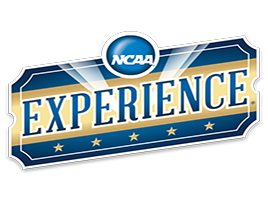NCAA DIII
Division III is a division of the National Collegiate Athletic Association of the United States. The division consists of colleges and universities that choose not to offer athletically related financial aid (athletic scholarships) to their student-athletes.

As explained in more detail about NCAA Division II, the NCAA's first split was into two divisions. The former College Division was formed because many NCAA member schools wanted an alternative to the expensive nature of what is now Division I. Division III was formed in 1973 in a split of the College Division. The former College Division members that chose to offer athletic scholarships or to remain in a division with those who did became Division II, while members which did not became Division III. There are 449 member institutions (both full and provisional), making it the largest of the three divisions in the NCAA.
Division III schools range in size from fewer than 500 to over 20,000 students. D-III schools compete in athletics as a non-revenue-making, extracurricular activity for students; hence, they may not offer athletic scholarships, they may not red-shirt freshmen and they may not use endowments or funds whose primary purpose is to benefit their athletic programs. Also, under NCAA rules, D-III schools "shall not award financial aid to any student on the basis of athletics leadership, ability, participation or performance". Financial aid given to athletes must be awarded under the same procedures as for the general student body, and the proportion of total financial aid given to athletes "shall be closely equivalent to the percentage of student-athletes within the student body."
Scholarship Limits by Sport
All Division III schools must field athletes in at least ten sports, with men's and women's competition in a given sport counting as two different sports. In 2012, coeducational schools with more than 1,000 undergraduates must field athletes in at least twelve sports, with at least six all-female teams and at least six teams that are either all-male or mixed-sex. Coeducational schools with fewer than 1,000 undergraduates must still field at least five sports in each category. Single-sex schools need only field five or six sports, depending on undergraduate enrollment. For all schools regardless of enrollment, at least three sports for each sex must be team sports.
